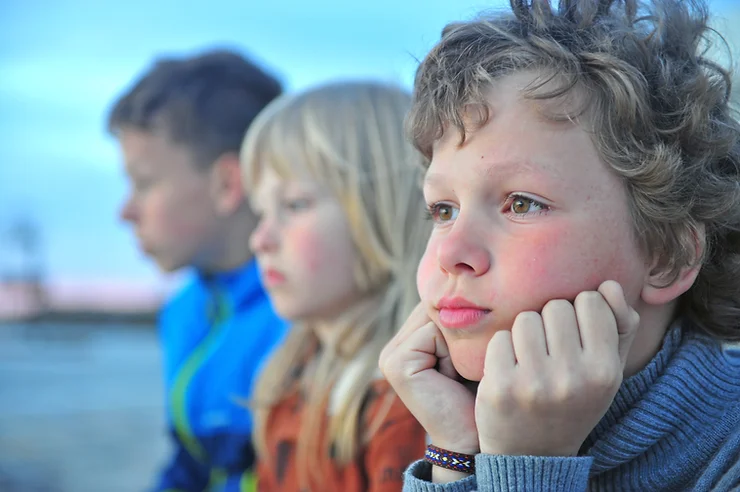Trauma experienced in childhood as a result of abuse or neglect can have long lasting and negative impacts for a child as they grow and develop. Trauma can impact a child’s physical and psychological development and their capacity to build and develop positive attachments and relationships with others. Trauma can also impact a child’s coping capacity and can lead to negative coping strategies such as self-harm and substance abuse. The impact of trauma can be wide reaching, but better outcomes can be achieved if the indicators of harm are noticed early and responded to, so that supports and services can be established.
What is Childhood Trauma?
Childhood trauma is any kind of trauma arising from sexual, physical, psychological, or emotional abuse, neglect, or a child’s exposure to harm, such as exposure to a caregiver’s violence, substance use, mental health or their own experience of unresolved trauma.
Children are dependent on adults to provide a safe environment so that they are able to grow and develop. Without this Safe Space, children may experience trauma. Children may present in different ways when they have experienced trauma, however there are indicators and signs that can help identify when a child may be at risk of harm or experiencing trauma.
What are Indicators of Harm?
Different types of harm have different types of indicators, which if noticed, should be explored further, and reported and responded to if necessary. Indicators of harm can include:
- Physical: injuries, bruising, cuts, grazes, broken bones, repeated and unexplainable injuries, disclosures of abuse, urinary tract infections, complaints of injuries to genital areas
- Behavioural: flight, fight or fright reactions, self-harming behaviours such as cutting, hitting their head against a wall, self-soothing behaviours such as rocking, dissociation, attachment issues, verbal or physical aggression, withdrawing, fear, nervousness, compliance, secret keeping, hording food
- Psychological: developmental delays, changes in mental wellness such as mood swings, depression, self-harming and suicidal ideation, development of mental health concerns, poor peer relationships, engaging in risk-taking behaviours
- Visual: changes in physical appearance, changes in how they dress, poor self-care, poor hygiene, weight loss or weight gain, pale appearance, having increased health issues
- Sexual: sexualised behaviour, indiscriminate affection, age-inappropriate physical contact, age-inappropriate sexualised discussions and conversations, grooming and manipulations, evidence of exploitation such as frequent gifts, disclosures of abuse
Child Safety in Organisations
Organisations have a duty of care to take reasonable steps to protect children from harm that is reasonably foreseeable. Organisations working with children must comply with relevant state based Child Safe Standards and the National Principles for Child Safe Organisations to ensure that they provide a Safe Space for children and young people in their care.
Risk mitigation is an essential component of safeguarding, as is the capacity to detect child abuse within the organisation and comply with all legal and moral reporting obligations. To do so, all staff must have the capacity to recognise indicators of harm and know how to respond.
How can organisations recognise and respond to Indicators of Harm?
Organisations should have policies and procedures in place to assist staff in recognising and responding to indicators of harm. Child safety training is a vital component of increasing staff capacity and awareness in this regard.
If a member of staff is concerned about a child experiencing harm, they should explore these concerns further or report to someone who has the capacity and experience to support them and the child. It is important that an organisation takes all disclosures from a child seriously and a person receiving a disclosure should let the child know that they are listening and that they care. It is ok to ask questions and be curious, and speak to other adults in the child’s life, including caregivers (if appropriate), to try and understand what is happening for a child. However, it is not a staff member’s role to investigate the concerns and any questioning should be open and trauma informed.
Organisations must ensure that it complies with all legal and moral reporting obligations. All conversations and any action taken should be documented to assist in reporting and exchange of information in any subsequent external or internal investigations, including the provision of information to appropriate authorities and services.
How can we help?
The team at Safe Space Legal have extensive safeguarding experience and provide the following child safety services:
- Drafting of child safety policies, procedures and codes of conduct
- Child safety training
- Child safety and safeguarding investigations which are compliant with relevant Reportable Conduct Schemes.
- Ensuring that complaints and reporting processes are compliant with legal obligations and relevant reportable conduct schemes
- Assistance and support to respond to allegations of child abuse including notifications under reportable conduct schemes; and
- Root cause analyses following critical incidents
Contact [email protected] or call 03 9124 7321 to make a complementary consultation to discuss your child safety and safeguarding needs.

